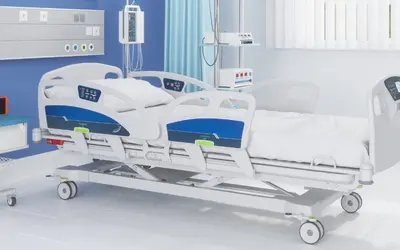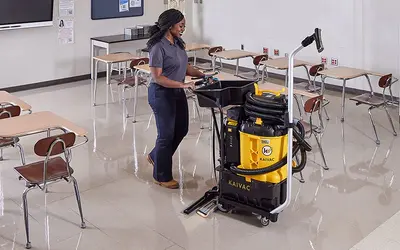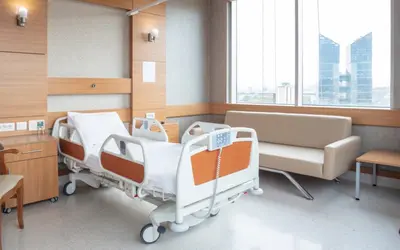What Cleaning Pros Need to Know about Biofilm and COVID

A few years back, when the discussion turned to cleaning and disinfecting surfaces, many publications in the professional cleaning and facility management industries were reporting on biofilm. Biofilm is essentially pathogen-generated housing for bacteria and germs. Since then, we have not heard that much about it. However, now biofilm is back in the news, specifically biofilm and COVID. A recent study has found connections between biofilm and COVID-19. In this blog, we’ll unpack the findings of that study and determine what to do to keep facilities healthy in light of this new information.
What Is Biofilm?
Biofilm is a collection of thousands, even millions of bacteria growing together under a one roof, a small film-like substance. The film comprises secretions from the bacteria. It protects them, providing a shielding effect. Here is more information from the CDC about biofilms.
How Long Have We Known About Biofilm?
To my surprise, they were first identified by a Dutch scientist back in 1684. Antoine van Leeuwenhoek reported to the Royal Society of London that what he had uncovered was a vast accumulation of microorganisms on dental plaque.
The number of these animalcules [an archaic term to describe microorganisms] in the scurf of a man’s teeth are so many that I believe they exceed the number of men in a kingdom. Antoine van Leeuwenhoek
Teeth are just one surface where biofilms live. They also latch onto floors, counters, fixtures, and various commonly touched and often damp surfaces. Used mops, for example, tend to be moist, soiled, and contaminated — the perfect setting for bacteria and biofilm to grow.
Is Biofilm Easy to Remove?
According to the CDC, bacteria living in biofilm can be as much as 1,000 times harder to eliminate than other bacteria. The biofilm itself creates a powerful adhesive, making it very difficult to remove from most surfaces using traditional cleaning methods.
The same is true when found on mops. Washing used mops with hot water and detergent may not remove deeply embedded biofilms. This means even a laundered mop head could spread biofilm on floors as the mop is used.
What Is the Connection Between Biofilm and COVID?
A study published in March 2021 reported that Pseudomonas aeruginosa (P. aeruginosa), a “biofilm-forming opportunistic pathogen” that causes chronic infections, has been found in COVID-19 patients, making their illness worse and much harder to treat. In fact, in one hospital, P. aeruginosa was the top co-infecting pathogen in COVID-19 patients.
How Serious Is This?
In short, the situation is very serious. P. aeruginosa is considered a superbug — bacteria that are resistant to antibiotics — that can cause pneumonia as well as infections in the blood. More alarming, patients may become infected during or after surgery, resulting in a healthcare-acquired disease.
CanYou Treat P. aeruginosa?
Treatment options for this superbug are better today than a few years back. However, with many people, newer antibiotics and newer combinations of antibiotics still do not work. A person with COVID-19 may already be very ill, complicating treatment and increasing the possibility of death.
How Do You RemoveBiofilm from Surfaces?
One option for removing biofilm is to use what Dr. Michael Berry, author of the book Protecting the Built Environment: Cleaning for Health, called high-pressure cleaning systems or High-Flow Fluid Extraction (HFFE). (At Kaivac, that means No-Touch Cleaning systems.) According to Berry, the HFFE process creates a liquid current that transports unwanted matter into a recovery tank. The tank contains and quarantines the matter.
How Can We Prevent Biofilms from Developing?
Here’s where you come in, cleaning professionals tasked with keeping people healthy. To prevent biofilms from developing, we must clean surfaces more frequently and more effectively. That’s our best defense. Dr. Karen Vickery, a Doctor of Biomedical Sciences in Australia, says we need to use elbow grease. At Kaivac, we prefer to work smarter with a No-Touch Cleaning system, like the KaiVac 1750.


